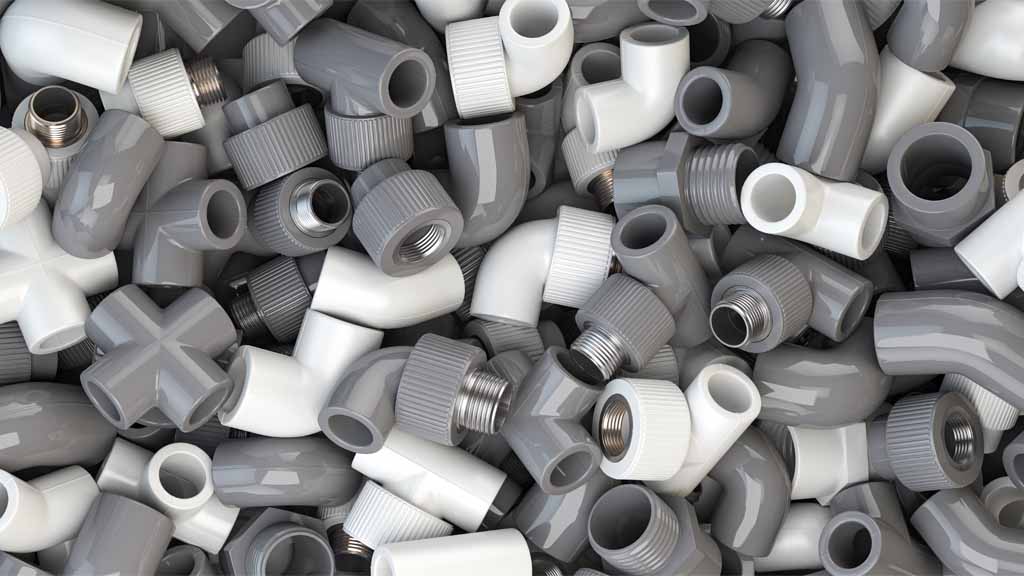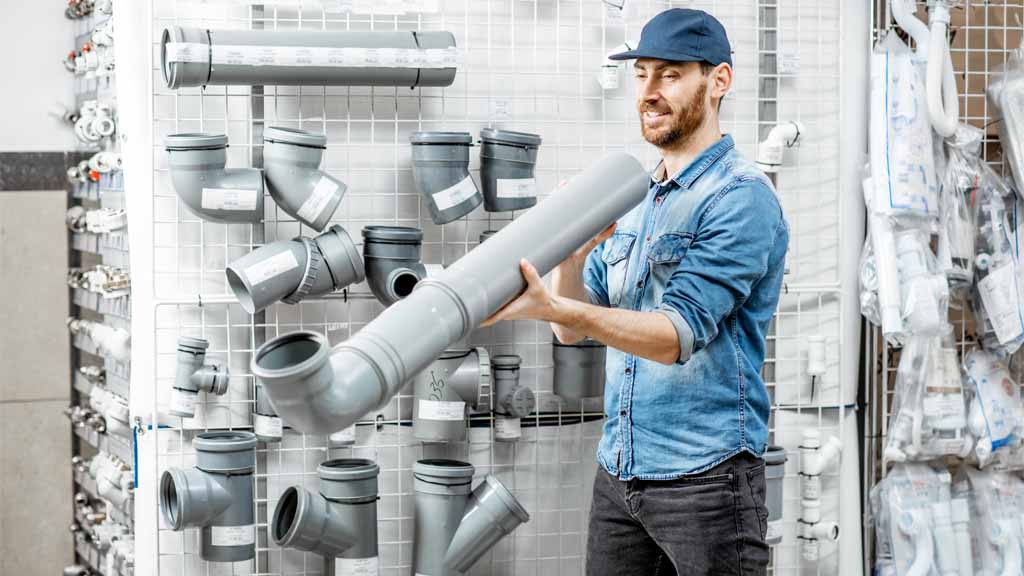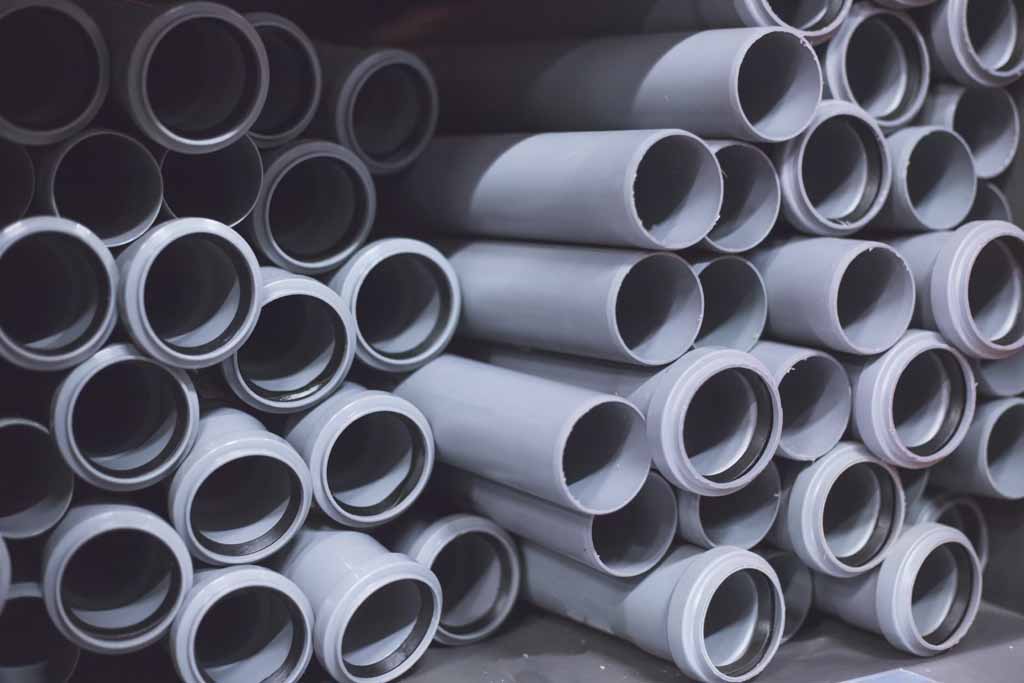Painting the pipes in your home’s foundation is easy to make them less visible. The paint will give them a neat appearance, which can help hide problems like cracks or leaks.
Can you paint black plumbing plastic tubes? It just requires some careful preparation and patience. Here are some tips for painting them successfully.
Why you might want to paint black plumbing tubes
Can you paint black plumbing plastic tubes yes because:
- It will hide them under your home’s foundation.
- It makes them easier to clean.
- It makes them more attractive.
- It makes them more durable in the case of PVC pipes, which are softer and more prone to scratches.
- It makes it easier to repair.
- You can identify missing parts quickly by ensuring that all the marks line up on both sides of a joint when connecting two pieces.
- You can also identify missing parts by ensuring that all the marks line up on both sides of a joint when connecting two pieces.
Painting Other Types Of Surfaces
Can you paint black plumbing plastic tubes? Painting is a little different than painting other types of surfaces, but it is still doable. If you have black plastic pipes, you may want to paint them white or gray or something else that is not as dark.

So that they blend in better with the rest of your house and don’t stand out as much, you can paint them whatever color you want, but make sure you have all the right supplies and know how to use them before trying this project on your own.
If you use a sprayer, however, if using brushes, it covers up more surface area than just one coat of paint.
If you want to ensure that your pipes are sealed well, you can also use a particular type of butyl tape. You can use this alone or in conjunction with plastic pipe sealant if you don’t have any on hand.
The butyl tape is applied directly over the inside surface of the tube where there is no paint or primer coating yet. This will help keep moisture out and protect against future rusting or decay. If you use a sprayer, it covers up more surface area than just one coat of paint.
List Of Supplies
Can you paint black plumbing plastic tubes, what you need:
- Paint – black, white, or any other color of your choice if you want to paint the whole tube.
- Primer – if you’re painting over another color.
- Brush or roller – Can you paint black plumbing plastic tubes? Depending on what’s faster for you to use. It can also have a handle, so it’s easier to hold and carry around. Any brand usually works fine for this project! And don’t forget about using water when applying the paint so it goes on smoothly without streaks.
ADD CTA HERE
- Would it be possible to paint black plumbing plastic tubes? If there are cracks or holes in your tube, this step might be difficult since those areas tend not to apply the paint evenly. If you’re using a brush, dip it in water and gently dab it inside the tube. Don’t press down or rub too hard, or else you’ll have streaks! You have enough moisture inside them from regular use, which makes them hard.
How To Paint The Tubes
- Use a good-quality brush. You can use a cheap brush to paint the primer, but it’s best to save your best tools for the top coat of paint.
- Can you paint black plumbing plastic tubes? Apply primer. Applying primer first is essential because it will help fill in bare spots or scratches on your plastic tubes. Before you paint them over with black latex enamel or another type of finish that could rub off easily if touched after the painting is complete.
- Let dry for 24 hours before applying a top coat of black latex enamel paint, which most people find works well for this project because it provides good coverage with little need for touch-ups later down the road.
- If you have some bare spots left behind after using primer and then topcoat, consider using an epoxy primer. However, be aware that this may cause more bubbles than just using one layer without an additive material like epoxy mixed in beforehand.

Can you paint black plumbing plastic tubes? Use a high-quality brush, such as an acrylic or latex brush. You can use a cheap brush to paint the primer, but it’s best to save your best tools for the top coat of paint.
If you don’t have any brushes designed explicitly for enamel paints or epoxies, consider using foam brushes instead—they tend not to leave behind many bristles when used on projects like this.
Clean The Pipe
Can you paint black plumbing plastic tubes? The best way to ensure that properly is to ensure it is clean. The first step in this process is using a wire brush to remove any dirt or debris from the pipe.
Then use a rag to wipe down the entire length of the pipe so that it is free of dust and dirt particles. If there are any stubborn pieces of dirt on the surface, you can use a damp rag for more effective cleaning.
After cleaning off all dust from your plumbing pipes, ensure they’re scorched before painting them! This may seem obvious, but many people forget this step because they are excited about getting started with their project.
After cleaning the pipes and letting them dry, you’ll want to apply a primer coat. This will seal any moisture that could cause your paint job to peel off prematurely. Make sure that you allow this coat of primer to dry thoroughly before moving on to painting.
Sanding The Surface of the Plumbing Plastic Tube
- Take a black plastic piping tube and sand the surface.
- Sanding the pipe with a sanding block will prevent damage.
- Dust can be removed by vacuuming.
- Clean the pipe with a wire brush to remove rust or dirt.
- Wipe with a clean rag and wash it off with water after using a wire brush.
- This will prevent rusting on the plastic piping tubes you want to paint black and help let the paint stick better once you apply it later in this process.
- If you don’t do this, chances are good that when applying your new coat of paint over the top, these areas may not look as good because some things, such as oils from our hands, can get trapped inside them.
- This might cause some unwanted effects like more noticeable streaks during application time, so make sure that when cleaning off this top layer first before applying any paint layers onto them.
Apply Primer To The Pipe
After you have applied the epoxy primer, let it dry for 24 hours. Look for cracks or bubbles, and touch up any missing areas with a second coat of primer, if necessary.
Spray one thin topcoat of white gloss paint onto the pipes. Allow it to dry for about 24 hours before touching anything else, so it has time to cure fully.
Next, spray two thin coats of paint using an ultrafine flat black spray paint from Rustoleum on both sides of each piece until all surfaces are covered in black color except where you have applied primer.

Paint The Pipe
Can you paint black plumbing plastic tubes?Paint the pipe. Once the primer has completely dried, use a good-quality brush and apply two thin coats of paint. Be sure to cover every single inch of your pipe with even strokes.
When the paint is completely dry, use a metal file to remove any rough edges from the pipes gently. Sand them down with 220-grit sandpaper if necessary once you’ve finished painting, let them dry completely.
Seal Paint on the Pipe
When applying the primer and topcoat of paint to your plumbing tubes, you should use a good-quality brush. Let the sealer dry for at least 24 hours before handling any pipes.
This will prevent your hands from accidentally transferring oils onto the surface of your newly painted plastic pipes, which can lead to rusting and deterioration later on down the road.
If there are bare spots on any piping after it dries, touch them with a bit more paint, so they look nice and smooth like new. Once everything is dry, remove all tape residue with a razor scraper so that no adhesive gets left behind in places where it doesn’t belong.
Prepare The Plastic Pipes.
Prepare the plastic pipes. Use a good-quality brush to remove any dirt or dust from the surface of your equipment. Use a primer that specializes in plastic tubes. Please wait 24 hours before applying two coats of paint and allow them to dry for 24 hours between each coat. Use fine-grit sandpaper to smooth the surface and remove any imperfections.
Let It Dry For 24 Hours
After you have applied all three coats of paint, let it dry for 24 hours. If you want to seal the finish and make it more durable, use a clear sealant over your finished project.
You can use this same method on other plumbing plastic tube projects as well, such as your bathroom vanity or kitchen sink faucets and handles.
If you want to change the color of your faucet handles and knobs, you can use a similar method. Just be sure not to get paint on your sink or tub, as it may stain them. You may also want to wear gloves while painting, as some latex paints can irritate the skin.
Second coat of primer
When you’re done with the primer, look for cracks or bubbles and touch up any missing areas with a second coat of primer, if necessary.
Then, paint the pipes with your chosen color! Just look up a guide on painting them first in case you have special needs. Use either a brush or sprayer to apply your new coat of paint.
Can you paint black plumbing plastic tubes? If you’re painting over a dark color with a light one, you may need to use a second coat of primer to get full coverage. This is especially true if you’re painting over black, which can be challenging to cover.
If you’re unsure whether you need a second coat of primer, take a close look at your walls. If any areas look thin or patchy, add another coat of primer. It’s better to be safe than sorry.
Once you’ve applied your second coat of primer, let it dry completely before moving on to paint. You will achieve the best results if you follow these steps.
Spray A Thin Topcoat
Make sure that you have a good-quality if you’re using a sprayer, make sure to cover the ground around your pipes with newspaper or plastic to keep them from getting wet.
If using a brush, remember that it’s easier to go back over your work than to start over completely brush and roller. Can you paint black plumbing plastic tubes? Yes,If you paint with spray paint, use a spray gun to get better results. If you are using a brush and rollers, it is best to purchase an epoxy primer so that the paint will adhere more effectively.
- Purchase high-grade interior or exterior paints with excellent coverage and durability ratings; these will be much easier to work with than cheaper paint brands.
- Paint your pipes using multiple coats of latex primer before applying any topcoats; this helps prevent them from becoming chipped off by other forces like humidity or sunlight exposure later down the road.
- Plus, it gives them extra protection against scratches caused by things like putting their hands inside when cleaning out gunk build-up inside sewer drains.

Bare Spots On The Pipes
Touch up any scratches or bare spots on the pipes with a small brush dipped in paint. This can be done before you begin painting or at the end of your project, but it’s easier to cover up scratches once the main body of your project has been painted.
- If you’re touching up bare spots, use white paint and apply it directly over the area that needs to be covered.
- If you have black plastic rather than gray, use black color instead of white.
Use a small brush to paint around the edges of the pipe. This will keep your coverage neat and prevent drips that could cause streaks.
You can also use a bigger brush to paint over the pipe, but remember that you’ll need to apply several coats. If you’re using a roller or sprayer, apply thin coats so that your paint doesn’t pool at the bottom of the pipe.
Painted White To Hide
Black plastic plumbing pipes can be painted white to hide under your home’s foundation.

If you don’t like the look of black plastic plumbing pipes, you can paint them white so that they blend in with your foundation. Remove any dirt or grime from the lines using a brush and soapy water.
Use a dry rag to wipe off any residual soap from the surface of your pipe. Then paint over it with primer and let it dry for 30 minutes before applying two coats of latex paint.
If you’re looking for something other than white for your new color scheme, try painting your black pipes to match other features around your homes, such as window frames or shutters.
If you’re looking for something other than white for your new color scheme, try painting your black pipes to match other features around your homes, such as window frames or shutters.
Conclusion
Paint is a great way to add color and personality to a room. It can also be used for practical purposes like hiding pipes or adding insulation around windows. Painting black plastic plumbing pipes can be complicated due to their texture, but if done correctly, it will make your home look more attractive and keep water flowing smoothly through your plumbing system.




